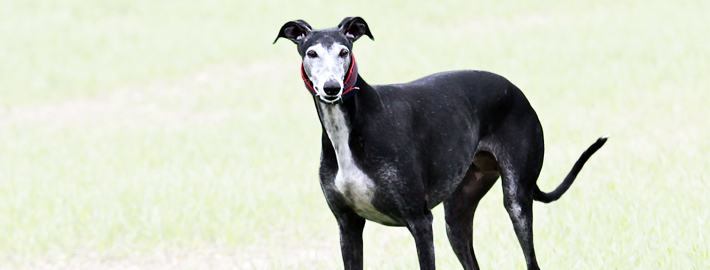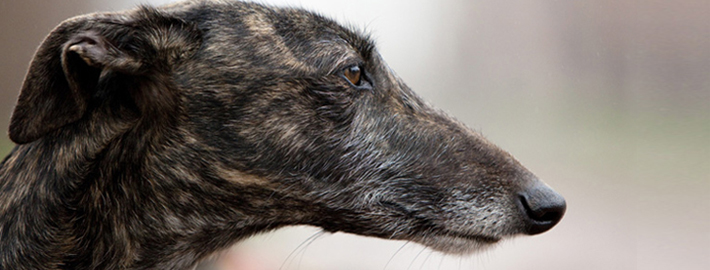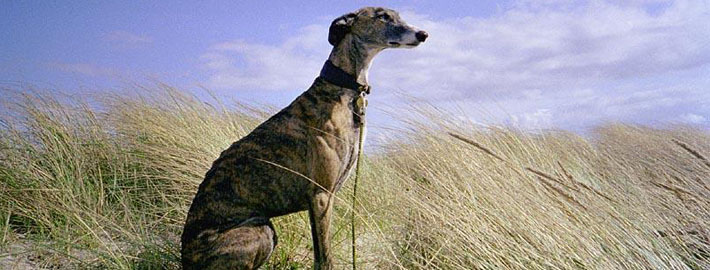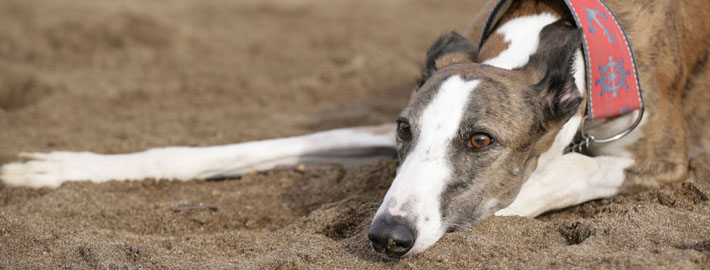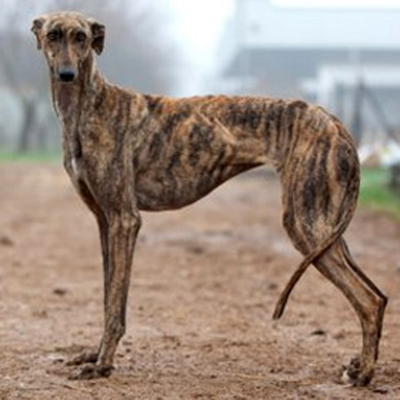What makes the Galgo Español Unique?
The Galgo Español or Spanish greyhound is an ancient breed of dog, specifically a member of the sighthound family. This is a sighthound created to course rabbit and hare, but these days he is primarily a companion dog who is rarely seen outside of Spain.
Breed Groups
Page Contents
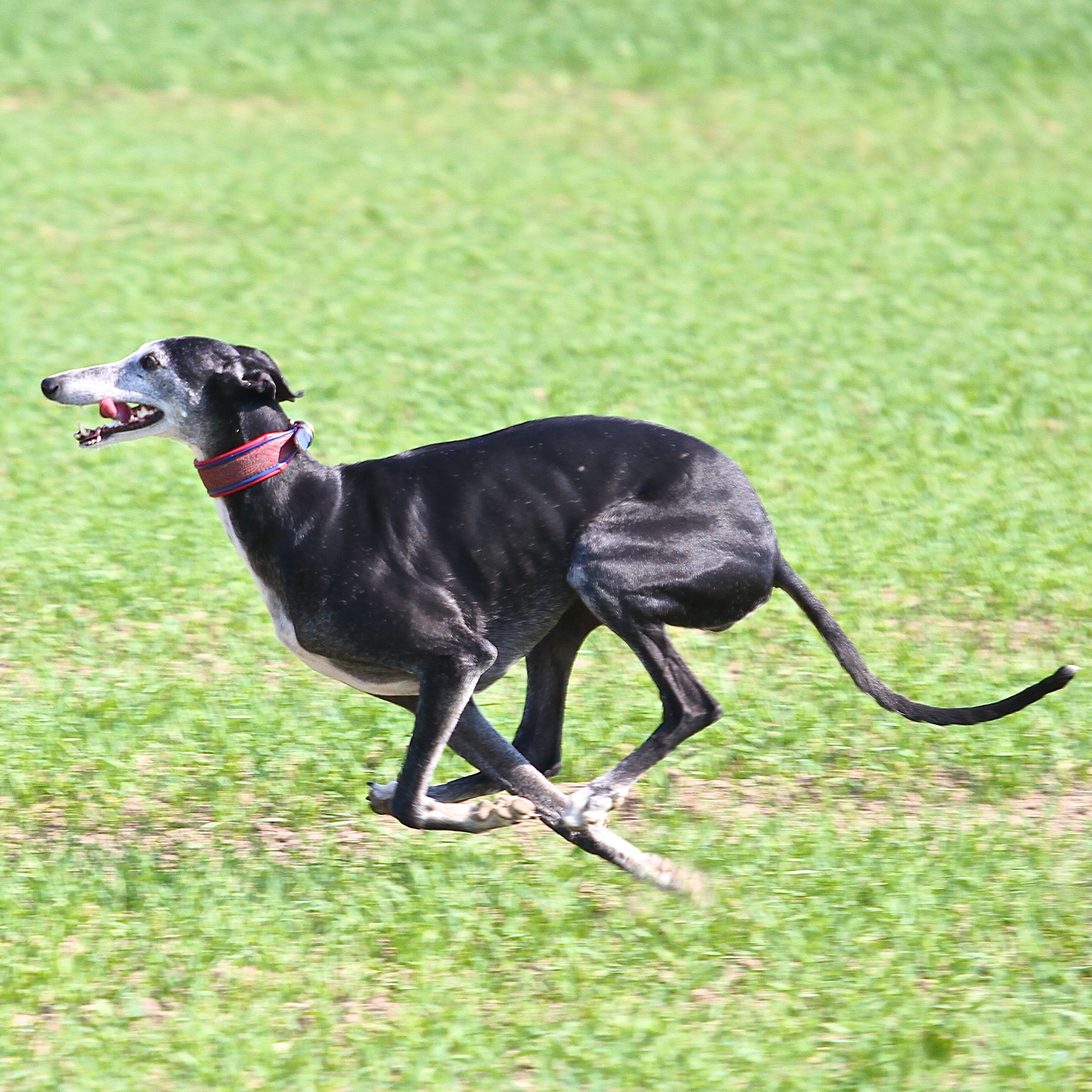
SnapShot
| Size: | Males – 63 to 71 cm (25 to 28 inches) Females – 58 to 66 cm (23 to 26 inches) |
| Weight: | Males – 27 to 29 kg (60 to 65 pounds) Females – 22.6 to 25 kg (50 to 55 pounds) |
| Origin: | Spain |
| Life Span: | 12 – 15 Years |
| Colour: | brindle, fawn, red or black, with or without white markings |
| Litter Size: | 6 to 8 puppies |
Is the Galgo Español Right For You?
The Galgo Español will do okay in an apartment if it gets enough exercise. It is relatively inactive indoors and a small yard will do. Greyhounds are sensitive to the cold but do well in cold climates as long as they wear a coat outside. Do not let this dog off the leash unless in a safe area. They have a strong chase instinct and if they spot an animal such as a rabbit they just might take off. They are so fast you will not be able to catch them.
In 5 Words
- Quiet
- Affectionate
- Calm
- Gentle
- Laid back
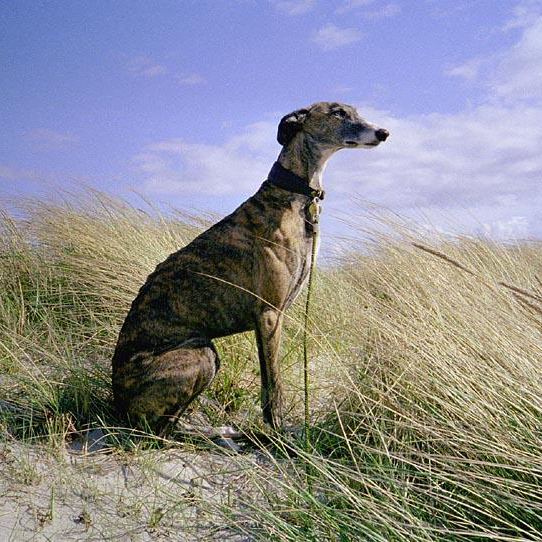
Characteristics
Learn About the Galgo Español
Description
General Description
Galgos are similar in appearance to Greyhounds, but are distinctly different in their conformation. Galgos are higher in the rear than in the front, and have flatter muscling than a Greyhound, which is characteristic of endurance runners. They also tend to be smaller, lighter in build, have longer tails and have a very long, streamlined head that gives the impression of larger ears. Their chests are not as deep as a Greyhound’s and should not reach the point of the elbow
Size
A male Galgo measures on average 25 to28 inches and weighs around 60 to 65 pounds, the female 23 to26 inches and weighs around 50 to 55 pounds.
But keep in mind, these are averages and we have seen taller (31 inches), smaller, heavier and lighter(36 pounds) galgos.
Coat
The coats range from short hair (like that of a greyhound), to varying degrees of long and wirehair coats, as seen in the Scottish deerhound and other sighthounds. Outside of sunny Spain, they require a warm coat to keep them warm in cold winter weather: like all greyhound type breeds, they have little body fat and short coats, so extra warmth is preferred for colder climates.
Short History of the Galgo Español
Sighthounds — dogs that hunt by sight — have existed since ancient times. Different types of sighthounds have developed in different countries depending on the terrain and quarry. The Galgo is a Spanish sighthound created to course hare and rabbit. His name comes from the Latin “canis gallicus,” meaning Celtic dog. The Galgo probably descends from Greyhound-type dogs that were influenced by Salukis during the Moorish conquest of Spain.
The Galgo is rare in the United States and is not recognized by the American Kennel Club or the United Kennel Club. The dogs may participate in lure coursing events through the American Sighthound Field Association.
Temperament
The Galgo Español shows typical characteristics of a sighthound. At home, a Galgo behaves relative calmly and unobtrusively. Galgos bark very rarely. He saves his energy and his Spanish fire for the outside walks. They are calm, quiet, gentle and laid back; happy to sleep their day away on their backs on a sofa.
More than 90% of Galgos can be considered cat-friendly and are therefore an ideal choice for the hound lover who also owns cats. Almost all Galgos are also friendly towards other dogs and small dogs. Galgos are also very good with children, being calm in the house so there is less risk of a child being knocked over or jumped on than with a more excitable breed. They are very gentle and tolerate the often over-enthusiastic attentions of children with little risk of retaliation from the dog. Galgos have a very reserved personality and they have a tendency towards shyness, so it is very important that they be socialized early in life so that they grow up to be comfortable around strange people, dogs and locations.
Caring for Your Galgo Español
General Health
Because there are so few of them, little is known about the Galgo Español’s health. In general, he appears to be a healthy breed. He may suffer muscle or toe injuries while running. Osteosarcoma, or bone cancer, is seen in sighthound breeds, so it is something to keep in mind. A reputable breeder will discuss potential health problems with you, including any problems she has seen in her own lines.
Care
Remember that after you’ve taken a new puppy into your home, you have the power to protect him from one of the most common health problems: obesity. Keeping a Galgo Espanol at an appropriate weight is one of the easiest ways to extend his life. Make the most of your preventive abilities to help ensure a healthier dog for life.
Like many other sighthounds, Galgos are a fairly healthy breed although they are sensitive to anaesthesia. As such, proper care should be taken by the owner to ensure that the attending veterinarian is aware of this issue. Although Galgos are big dogs, their history of selection as a working sighthound, their light weight, and their anatomy keep them safe from hip dysplasia. These dogs must run regularly to keep in perfect health, combined with their characteristic tendency to sleep all the rest of the day.
Grooming & Bathing
The smooth, shorthaired coat is easy to groom. Comb and brush with a firm bristle brush, and dry shampoo only when necessary. This breed is an average shedder. Cut nails as needed.
Exercise & Training
This breed needs to be taken on a daily long walk or jog, where the dog is made to heel beside or behind the person holding the lead, as instinct tells a dog the leader leads the way, and that leader needs to be the human.

